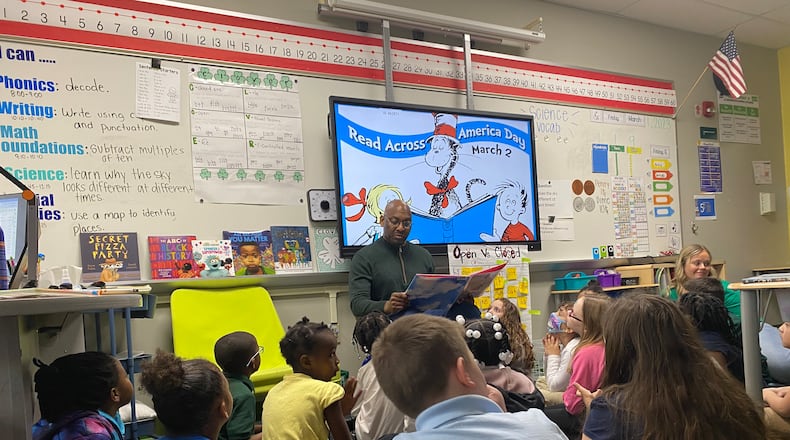The two-teacher model, where students were split into two groups and each was taught a different lesson by a different teacher, was implemented by former superintendent Elizabeth Lolli during the 2021-2022 school year using federal COVID-19 funding for the district to pay for the second teacher.
Initially, the model showed promise, with vast improvements from that first year. But in the 2022-2023 school year, state testing scores dropped for students who had two teachers in their classroom.
The district’s own calculations show its performance index, a measure of student improvements, went up by five points this past school year. Grades three, four and five had strong results on test scores for DPS.
Since there was still funding for the two-teacher model during the 2023-2024 school year, the district continued, but shifted its approach. Instead of two teachers teaching a different lesson to two groups of kids simultaneously, the district chose to ask the teachers to teach the same lesson to two different groups of kids at the same time.
The method was relatively popular among the teachers who used it. There’s extensive research showing that smaller class sizes are better learning environments for students. Many teachers talk about feeling “siloed,” as the only adult in a classroom with 20 or more kids during the school day, and the two-teacher model provided some adult interaction.
But that federal COVID-19 money is running out in September, and Lawrence said continuing the model does not make financial sense.
Neil Mahoney, the president of the Dayton Education Association, said there were no layoffs as a result of the district discontinuing the practice.
Instead, those teachers were able to be moved, and could teach up to two years above or below their licensure. Mahoney said all of the teachers who were impacted still have jobs, though not all in the same grade they were teaching or in the same school. More than 250 teachers were impacted, he said.
“The DEA worked very closely with the administration, with Dr. Lawrence, and we turned what could have been a very anxious opportunity into what I feel is a success,” Mahoney said, though he noted that some teachers were disappointed to make the move.
In the district’s preliminary performance results for the 2023-2024 school year, which will be finalized when report cards come out in October, DPS students in third and fifth grade showed consistent improvement in both math and English. Fourth graders gained eight points in reading – a huge improvement - but lost four points in math.
Middle schoolers did not do as well. Sixth graders were flat in English and math, showing no improvement over the prior year. Seventh graders lost one point in English but gained three points in math. Eighth grade students lost the most ground: they lost six points in English and 1.5 in math.
Middle school has been a problem for the district for a long time, and during the past year, the district has focused on improving outcomes for middle schoolers.
Lawrence said the students in those three grades had multiple long-term substitute teachers who did not have licenses. He said the district is implementing a system next school year to have licensed math teachers work virtually with students in classrooms with long-term substitute teachers.
Will Smith, DPS’s board of education president, said he has confidence in Lawrence as he enters his second year as superintendent. More stability will be good for the district, Smith said.
Smith said supporting staff, engaging families, prioritizing mental health and making Dayton Public a preferred choice for both families for educators are all things the district is considering, especially in the broader context of the district, which is a poor district, heavily Black and has many new immigrant families moving in.
“Improving our middle school performance is a pivotal goal, as this is where we often see students transfer to other districts,” Smith said.
About the Author

